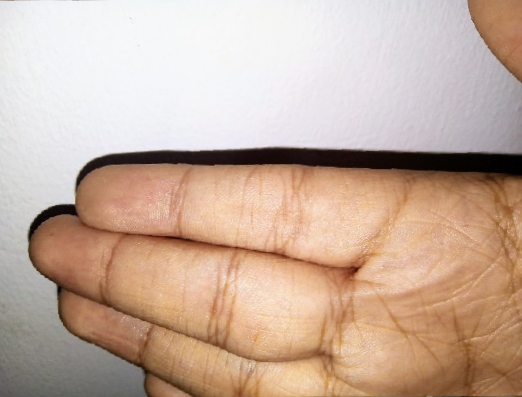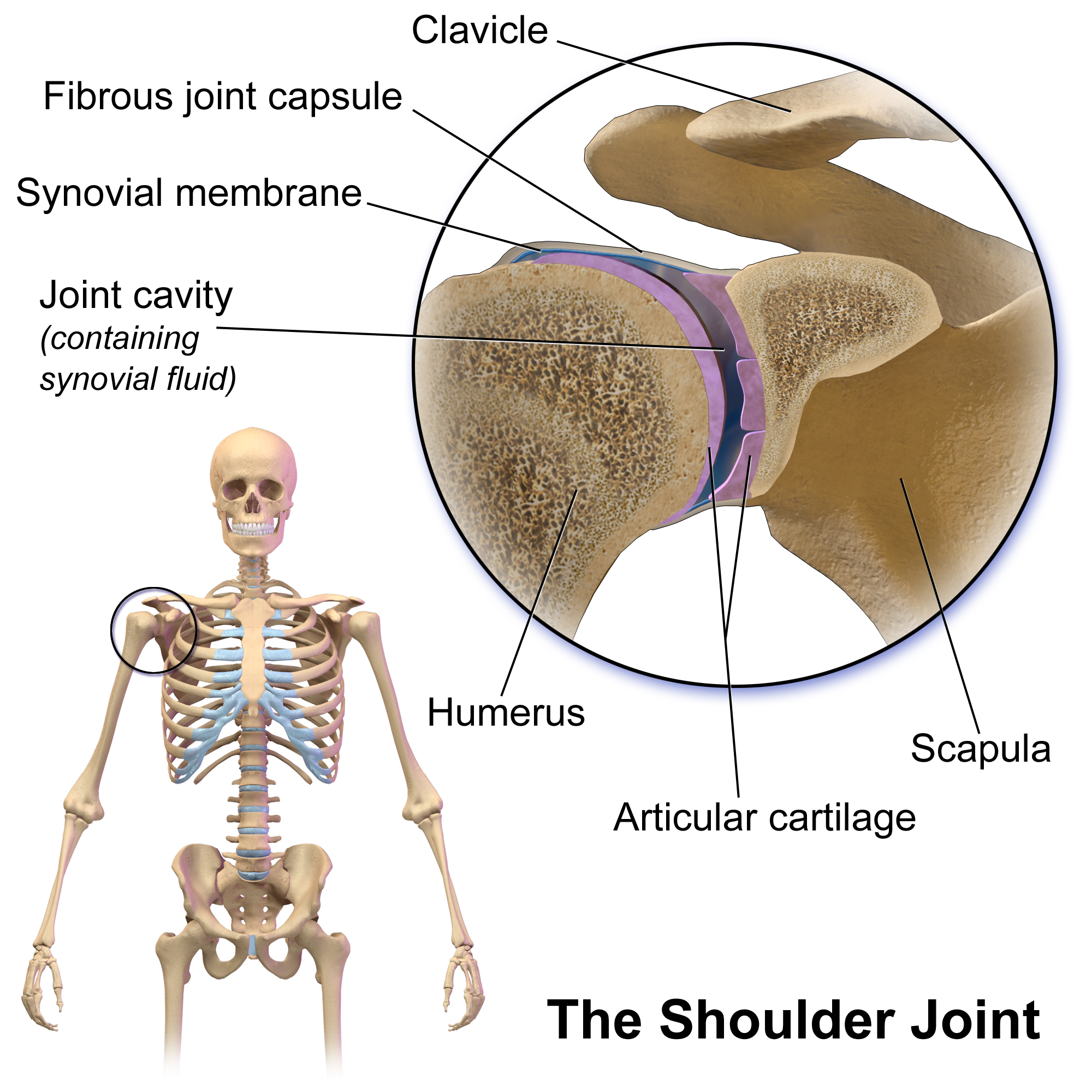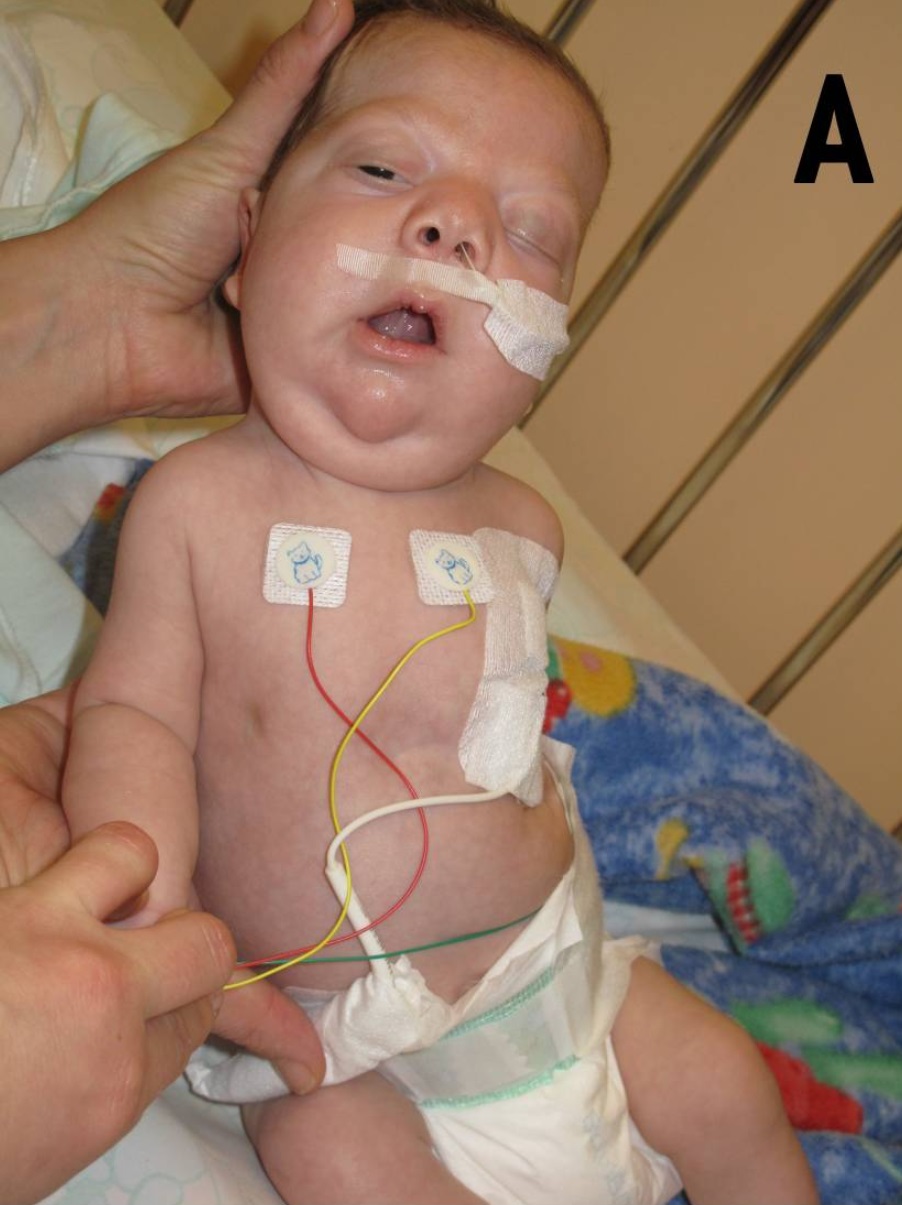|
Webbed Neck
A webbed neck, or pterygium colli, is a congenital skin fold that runs along the sides of the neck down to the shoulders. There are many variants. Signs and symptoms On babies, webbed neck may look like loose folds of skin on the neck. As the child grows, the skin may stretch out to look like there is little or no fold. Associated conditions It is a feature of Turner syndrome (only found in girls) and Noonan syndrome, as well as the rarer Klippel–Feil syndrome, or Diamond–Blackfan anemia Diamond–Blackfan anemia (DBA) is a congenital pure red blood cell aplasia that usually presents in infancy. DBA causes anemia, but has no effect on the other blood components (platelets, white blood cells). This is in contrast to Shwachman–B .... References External links {{Congenital malformations and deformations of ear, face and neck Congenital disorders of eye, ear, face and neck ... [...More Info...] [...Related Items...] OR: [Wikipedia] [Google] [Baidu] |
Turner Syndrome
Turner syndrome (TS), commonly known as 45,X, or 45,X0,Also written as 45,XO. is a chromosomal disorder in which cells of females have only one X chromosome instead of two, or are partially missing an X chromosome (sex chromosome monosomy) leading to the complete or partial deletion of the pseudoautosomal regions (PAR1, PAR2) in the affected X chromosome. Typically, people have two sex chromosomes (XX for females or XY for males). The chromosomal abnormality is often present in just some cells, in which case it is known as Turner syndrome with mosaicism. 45,X0 with mosaicism can occur in males or females, but Turner syndrome without mosaicism only occurs in females. Signs and symptoms vary among those affected but often include additional skin folds on the neck, arched palate, low-set ears, low hairline at the nape of the neck, short stature, and lymphedema of the hands and feet. Those affected do not normally develop menstrual periods or mammary glands without hormone trea ... [...More Info...] [...Related Items...] OR: [Wikipedia] [Google] [Baidu] |
Medical Genetics
Medical genetics is the branch of medicine that involves the diagnosis and management of hereditary disorders. Medical genetics differs from human genetics in that human genetics is a field of scientific research that may or may not apply to medicine, while medical genetics refers to the application of genetics to medical care. For example, research on the causes and inheritance of genetic disorders would be considered within both human genetics and medical genetics, while the diagnosis, management, and counselling people with genetic disorders would be considered part of medical genetics. In contrast, the study of typically non-medical phenotypes such as the genetics of eye color would be considered part of human genetics, but not necessarily relevant to medical genetics (except in situations such as albinism). ''Genetic medicine'' is a newer term for medical genetics and incorporates areas such as gene therapy, personalized medicine, and the rapidly emerging new medical specia ... [...More Info...] [...Related Items...] OR: [Wikipedia] [Google] [Baidu] |
Congenital
A birth defect is an abnormal condition that is present at childbirth, birth, regardless of its cause. Birth defects may result in disability, disabilities that may be physical disability, physical, intellectual disability, intellectual, or developmental disability, developmental. The disabilities can range from mild to severe. Birth defects are divided into two main types: structural disorders in which problems are seen with the shape of a body part and functional disorders in which problems exist with how a body part works. Functional disorders include metabolic disorder, metabolic and degenerative disease, degenerative disorders. Some birth defects include both structural and functional disorders. Birth defects may result from genetic disorder, genetic or chromosome abnormality, chromosomal disorders, exposure to certain medications or chemicals, or certain vertically transmitted infection, infections during pregnancy. Risk factors include folate deficiency, alcohol drink, d ... [...More Info...] [...Related Items...] OR: [Wikipedia] [Google] [Baidu] |
Skin Fold
Skin folds or skinfolds are areas of skin that are naturally folded. Many skin folds are distinct, heritable anatomical features, and may be used for identification of animal species, while others are non-specific and may be produced either by individual development of an organism or by arbitrary application of force to skin, either by the actions of the muscles of the body or by external force, e.g., gravity. Anatomical folds can also be found in other structures and tissues besides the skin, such as the ileocecal fold beneath the terminal ileum of the cecum. Skin folds are of interest for cosmetology, as some kinds may be considered aesthetically undesirable, and for medicine, because some of them are susceptible to inflammation and infection. Skin creases, skin folds and lines The skin creases of the human body are features of great anatomical, morphological, and surgical interest and important for the maintenance of the contour of each anatomic area. In the literature, ... [...More Info...] [...Related Items...] OR: [Wikipedia] [Google] [Baidu] |
Neck
The neck is the part of the body in many vertebrates that connects the head to the torso. It supports the weight of the head and protects the nerves that transmit sensory and motor information between the brain and the rest of the body. Additionally, the neck is highly flexible, allowing the head to turn and move in all directions. Anatomically, the human neck is divided into four compartments: vertebral, visceral, and two vascular compartments. Within these compartments, the neck houses the cervical vertebrae, the cervical portion of the spinal cord, upper parts of the respiratory and digestive tracts, endocrine glands, nerves, arteries and veins. The muscles of the neck, which are separate from the compartments, form the boundaries of the neck triangles. In anatomy, the neck is also referred to as the or . However, when the term ''cervix'' is used alone, it often refers to the uterine cervix, the neck of the uterus. Therefore, the adjective ''cervical'' ... [...More Info...] [...Related Items...] OR: [Wikipedia] [Google] [Baidu] |
Shoulder
The human shoulder is made up of three bones: the clavicle (collarbone), the scapula (shoulder blade), and the humerus (upper arm bone) as well as associated muscles, ligaments and tendons. The articulations between the bones of the shoulder make up the shoulder joints. The shoulder joint, also known as the glenohumeral joint, is the major joint of the shoulder, but can more broadly include the acromioclavicular joint. In human anatomy, the shoulder joint comprises the part of the body where the humerus attaches to the scapula, and the head sits in the glenoid cavity. The shoulder is the group of structures in the region of the joint. The shoulder joint is the main joint of the shoulder. It is a ball and socket joint that allows the arm to rotate in a circular fashion or to hinge out and up away from the body. The joint capsule is a soft tissue envelope that encircles the glenohumeral joint and attaches to the scapula, humerus, and head of the biceps. It is lined by a ... [...More Info...] [...Related Items...] OR: [Wikipedia] [Google] [Baidu] |
Ann Plast Surg
''Annals of Plastic Surgery'' is a monthly peer-reviewed medical journal covering all aspects of plastic and reconstructive surgery. It is published by Lippincott Williams & Wilkins and the editor-in-chief is William C. Lineaweaver (Joseph M. Still Burn and Reconstructive Center, Brandon, Mississippi, United States). Abstracting and indexing The journal is abstracted and indexed in CAB Abstracts, Current Contents/Clinical Medicine, Embase, Index Medicus/MEDLINE/PubMed, Science Citation Index Expanded, and Scopus. According to the ''Journal Citation Reports'', the journal has a 2022 impact factor of 1.5. See also *List of medical journals Medical journals are published regularly to communicate new research to clinicians, medical scientists, and other healthcare workers. This article lists academic journals that focus on the practice of medicine or any medical specialty. Jour ... References External links * {{DEFAULTSORT:Annals of Plastic Surgery 1978 establishments i ... [...More Info...] [...Related Items...] OR: [Wikipedia] [Google] [Baidu] |
Noonan Syndrome
Noonan syndrome (NS) is a genetic disorder that may present with mildly unusual facial features, short height, congenital heart disease, bleeding problems, and skeletal malformations. Facial features include widely spaced eyes, light-colored eyes, low-set ears, a short neck, and a small lower jaw. Heart problems may include pulmonary valve stenosis. The breast bone may either protrude or be sunken, while the spine may be abnormally curved. Intelligence is often normal. Complications of NS can include leukemia. Some of NS' symptoms are shared with Watson syndrome, a related genetic condition. A number of genetic mutations can result in Noonan syndrome. The condition may be inherited as an autosomal dominant condition or occur as a new mutation. Noonan syndrome is a type of RASopathy, the underlying mechanism for which involves sustained activation of the RAS/MAPK cell signaling pathway. The diagnosis may be suspected based on symptoms, medical imaging, and blood test ... [...More Info...] [...Related Items...] OR: [Wikipedia] [Google] [Baidu] |
Klippel–Feil Syndrome
Klippel–Feil syndrome (KFS), also known as cervical vertebral fusion syndrome, is a rare congenital condition characterized by the abnormal fusion of any two of the seven bones in the neck (cervical vertebrae). It can result in a limited ability to move the neck and shortness of the neck, resulting in the appearance of a low hairline. Most people only have one or two of those symptoms so it may not be noticeable without medical imaging. The syndrome is difficult to diagnose, as it occurs in a group of patients affected with many different abnormalities who can only be unified by the presence of fused or segmental cervical vertebrae. KFS is not always genetic and not always known about on the date of birth. The disease was initially reported in 1884 by Maurice Klippel and André Feil from France. In 1919, André Feil suggested another classification of the syndrome, encompassing not only deformation of the cervical spine, but also deformation of the lumbar and thoracic spine. ... [...More Info...] [...Related Items...] OR: [Wikipedia] [Google] [Baidu] |
Cleft Palate Craniofac
A cleft is an opening, fissure, or V-shaped indentation. Cleft may refer to: Anatomy * Cleft lip and palate, a congenital deformity * Cleft chin, a dimple on the chin * Pudendal cleft, part of the vulva * Intergluteal cleft, the groove between the buttocks Fiction * '' The Cleft'', a 2007 novel by Nobel prize laureate Doris Lessing * Cleft, the Boy Chin Wonder, a character in ''The Fairly Odd Parents'' Linguistics * Cleft sentence A cleft sentence is a complex sentence (one having a main clause and a dependent clause) that has a meaning that could be expressed by a simple sentence. Clefts typically put a particular Constituent (linguistics), constituent into Focus (linguisti ..., a type of grammatical construction Places * Cleft Island (Antarctica) * Cleft Island (Victoria) * Cleft Ledge * Cleft Point * Cleft Peak * Cleft Rock See also * * Cleave (other), the present tense of the past participle "cleft" * Clef (other) {{disambiguation, geo ... [...More Info...] [...Related Items...] OR: [Wikipedia] [Google] [Baidu] |
Diamond–Blackfan Anemia
Diamond–Blackfan anemia (DBA) is a congenital pure red blood cell aplasia that usually presents in infancy. DBA causes anemia, but has no effect on the other blood components (platelets, white blood cells). This is in contrast to Shwachman–Bodian–Diamond syndrome, in which the bone marrow defect results primarily in neutropenia, and Fanconi anemia, where all cell lines are affected resulting in pancytopenia. There is a risk to develop acute myelogenous leukemia (AML) and certain other cancers. A variety of other congenital abnormalities may also occur in DBA, such as triphalangeal thumbs, craniofacial abnormalities, and short stature. Signs and symptoms Diamond–Blackfan anemia is characterized by normocytic or macrocytic anemia (low red blood cell counts) with decreased erythroid progenitor cells in the bone marrow. This usually develops during the neonatal period. About 47% of affected individuals also have a variety of congenital abnormalities, including craniofa ... [...More Info...] [...Related Items...] OR: [Wikipedia] [Google] [Baidu] |



